Sarcophagus Of The Amazons: Etruscan Coffin With Paintings Of Dynamic Fighting Scenes Of Greeks With Amazons
A. Sutherland - AncientPages.com - The Sarcophagus of the Amazons is a large Etruscan sarcophagus of an unknown artist, dated back to the third quarter of the 4th century BC and preserved in the National Archaeological Museum of Florence.
It is a rare example of an ancient painting still preserving much of its extraordinary freshness. However, the restorations conducted in 2007 also contributed to the coffin's appearance.
The sarcophagus of the Amazons. Image credit: National Archaeological Museum Florence. Source
The painted alabaster sarcophagus dates to the 4th century BC (c. 350-325 BC). The four sides of it are decorated with polychrome paintings depicting various dynamic fighting scenes of battling Greeks and Amazons. The beautiful artifact represents an ancient Greek tradition of Amazonomachy, struggling between Greeks and the Amazons, illustrated with great variety: on horseback, on foot, on the chariot, etc.
Some brave women are winning, but others must die in this terrible fight. Those who fought the Amazons were Achilles, Bellerophon, Dionysus, Theseus and Heracles.
The sarcophagus of the Amazons". Image credit: ArchaiOptix - CC BY-SA 4.0
According to Stanford's Adrienne Mayor, a research scholar in the Department of Classics, these warrior women actually existed. In her new book, " The Amazons: Lives and Legends of Warrior Women Across the Ancient World," Mayor explains the real world and history behind the folklore of the Amazons.
"Amazons were modeled on stories of self-confident women of steppe cultures who fought for glory and survival and enjoyed male companionship," but, as Mayor puts it, "on terms that seemed extraordinary to the ancient Greeks."
"The popularity of Amazon stories and images suggests that Greek women and men enjoyed imagining heroes and heroines interacting as equals and seeking adventure and glory in hunting and battle."
A Greek fighting an Amazon. Detail from painted sarcophagus found in Italy, 350-325 BC.Image credit: Sailko - CC BY-SA 3.0
The Sarcophagus of the Amazons" – with dimensions; 71cm x 194 cm x 62 cm - was unearthed in the Etruscan town of Corneto (now Tarquinia, Italy) in 1869. Once, there was also another similar coffin (but without paintings), which was later lost.
Researchers believe the artifact was manufactured in Greece and shipped to Italy, still semi-finished. Its origin is certainly Greek or Magna Grecia (the Italian Mediterranean peninsula formerly colonized by the Greeks starting from the eighth century BC).
The Greek artisans used the white limestone alabaster stone, a type that does not exist in Etruria, and other decoration features that have no comparison in the Etruscan context.
On the sarcophagus, there are two inscriptions in Etruscan language: a large one on the slope of the lid bears the name of the deceased "Ramtha Huzcnai" (TLE ^ 2 122); the other also bears her name with a few additions and is located on one of the long sides of the chest.
But it is worth noting that the Etruscan scribe did not bother to engrave the paintings.
Fragment of terracotta amphora (jar) dated to 530 BC. Hercules is fighting the Amazon queen Hippolyte. Image credit: Bateman Group - Metropolitan Museum of Art.
Amazonomachy was expressed visually in more than 300 Greek vase paintings and sculptures.
The "Sarcophagus of the Amazons" gives us glimpses from the battlefield and the young Amazons involved in furious confrontations with the Greek warriors.
"One panel shows an Amazon in a short, belted tunic and trousers, described by archaeologists as young, bold, and powerful with a typical "pathetic-indignant" expression, rides a white horse with blue eyes. She turns to slash with her sword at an armored Greek with a spear. Another mounted Amazon wears a tunic, a Phrygian cap, trousers, boots, and leopard skin.
"Two pairs of Amazons in chariots drawn by four white, blue-eyed horses attack two Greeks on foot while another two Amazons prepare to slay a Greek on his knees between them. Two scenes of fallen Amazons, painted with particular tenderness and empathy, stand out because the women are nude.
"One has sunk to her knees, blood pouring from a spear wound, "pain and despair" in her face. The other nude warrior has fallen onto her shield while her attacker drags her up by the arm and is about to deal a death blow with his sword…" 1
While looking at the sarcophagus, it is important to stress that according to experts, the artisans and their workshop must have been of Hellenic culture.
However, they were not of Greek origin due to some minor though characteristic details regarding, for example, the harnesses of the participating horses.
Written by – A. Sutherland - AncientPages.com Senior Staff Writer
Updated on January 25, 2024
Copyright © AncientPages.com All rights reserved. This material may not be published, broadcast, rewritten or redistributed in whole or part without the express written permission of AncientPages.com
Expand for references- Mayor, A. The Amazons
Did The Amazons Really Exist? – Truth Behind Myths Of Fierce Female Warrior
More From Ancient Pages
-
 Secrets Of The Bible: Codex Zacynthius – Hidden Text In New Testament May Soon Be Uncovered
Biblical Mysteries | Oct 7, 2014
Secrets Of The Bible: Codex Zacynthius – Hidden Text In New Testament May Soon Be Uncovered
Biblical Mysteries | Oct 7, 2014 -
 Remains Of Ancient Predators Shed Light On How Humans Did Or Didn’t Find Food
Archaeology | May 2, 2022
Remains Of Ancient Predators Shed Light On How Humans Did Or Didn’t Find Food
Archaeology | May 2, 2022 -
 Bizarre Sound Of A Crash Remains An Unexplained Mystery
Featured Stories | Oct 22, 2020
Bizarre Sound Of A Crash Remains An Unexplained Mystery
Featured Stories | Oct 22, 2020 -
 Beautiful Legends Of The Great Smoky Mountains: The Cherokee’s Little People Nunnehi And The Medicine Lake Ataga’hi
Myths & Legends | Jul 10, 2024
Beautiful Legends Of The Great Smoky Mountains: The Cherokee’s Little People Nunnehi And The Medicine Lake Ataga’hi
Myths & Legends | Jul 10, 2024 -
 Easter Island Holds Clues To The Disappearance Of People On The ‘Mystery Islands’
Archaeology | May 14, 2021
Easter Island Holds Clues To The Disappearance Of People On The ‘Mystery Islands’
Archaeology | May 14, 2021 -
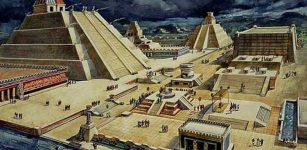 Rise And Fall Of City-States In Ancient Mexico And Peru Influenced By Climate Change
Archaeology | Oct 19, 2015
Rise And Fall Of City-States In Ancient Mexico And Peru Influenced By Climate Change
Archaeology | Oct 19, 2015 -
 LIDAR Discovery Of Valley Of Lost Cities In The Amazon
Featured Stories | Aug 16, 2024
LIDAR Discovery Of Valley Of Lost Cities In The Amazon
Featured Stories | Aug 16, 2024 -
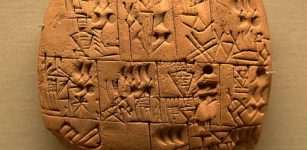 Uruk – Home To The Legendary Hero Gilgamesh
Featured Stories | Jun 6, 2021
Uruk – Home To The Legendary Hero Gilgamesh
Featured Stories | Jun 6, 2021 -
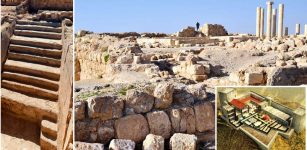 Ritual Bath In Herod’s Fortress Found In Ruins Of Machaerus, East Of Jordan River
Archaeology | Jun 16, 2017
Ritual Bath In Herod’s Fortress Found In Ruins Of Machaerus, East Of Jordan River
Archaeology | Jun 16, 2017 -
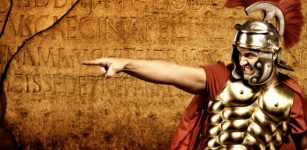 Meaning Of Ancient Hand Signs We Still Use Today
Ancient History Facts | Apr 22, 2021
Meaning Of Ancient Hand Signs We Still Use Today
Ancient History Facts | Apr 22, 2021 -
 First Scandinavian farmers were far more advanced than previously thought
News | Aug 23, 2015
First Scandinavian farmers were far more advanced than previously thought
News | Aug 23, 2015 -
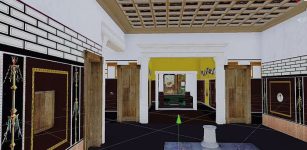 A Unique Look Inside An Ancient Home In Pompeii Re-Constructed With Virtual Reality
News | Mar 26, 2022
A Unique Look Inside An Ancient Home In Pompeii Re-Constructed With Virtual Reality
News | Mar 26, 2022 -
 On This Day In History: Treaty of York Was Signed – On Sep 25, 1237
News | Sep 25, 2016
On This Day In History: Treaty of York Was Signed – On Sep 25, 1237
News | Sep 25, 2016 -
 Prehistoric Dispilio: Accurately Dating Ancient Site To 5259 BC Using Cosmic Rays
Archaeology | May 21, 2024
Prehistoric Dispilio: Accurately Dating Ancient Site To 5259 BC Using Cosmic Rays
Archaeology | May 21, 2024 -
 Carved Symbols Related To The Galician Castro Culture Discovered At Castro de San Vicenzo, Orense, Spain
Archaeology | Oct 11, 2024
Carved Symbols Related To The Galician Castro Culture Discovered At Castro de San Vicenzo, Orense, Spain
Archaeology | Oct 11, 2024 -
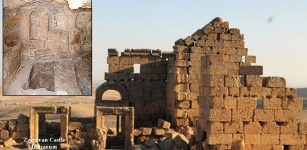 New Discoveries In Excavated Ancient Temple Linked To Secret Mithras Religion
Archaeology | May 15, 2018
New Discoveries In Excavated Ancient Temple Linked To Secret Mithras Religion
Archaeology | May 15, 2018 -
 The Curse Of Chief Chocorua Who Died On The Mountain That Bears His Name
Featured Stories | Mar 9, 2019
The Curse Of Chief Chocorua Who Died On The Mountain That Bears His Name
Featured Stories | Mar 9, 2019 -
 Giant Pre-Hispanic Jar Used To Make Mexican Traditional Corn Beer
Archaeology | May 6, 2020
Giant Pre-Hispanic Jar Used To Make Mexican Traditional Corn Beer
Archaeology | May 6, 2020 -
 Kelpie – Supernatural Horse-Liked Creature Lures Humans To Death In Scottish Lore
Featured Stories | Dec 29, 2021
Kelpie – Supernatural Horse-Liked Creature Lures Humans To Death In Scottish Lore
Featured Stories | Dec 29, 2021 -
 Unsolved Mysteries Of Cahokia – What Really Happened With The Large Metropolis?
Civilizations | Jan 15, 2015
Unsolved Mysteries Of Cahokia – What Really Happened With The Large Metropolis?
Civilizations | Jan 15, 2015




